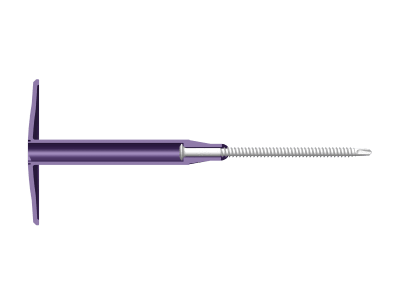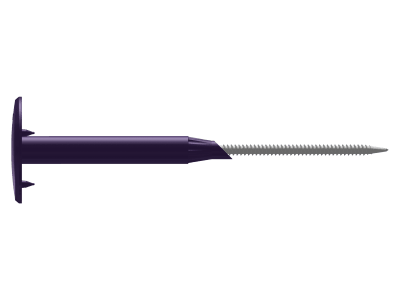
How do I select the correct tube washer and fastener combination?
- Read time: 2 minutes
- Date: 08 Jul 2024
- Flat Roofing
Tube washers are used for the attachment of insulation and/or membrane in flat roofing systems.
Generally manufactured from nylon, they're designed to prevent the cold-bridging effect of mechanical fastenings on flat roofing applications.

What size of tube washer do I need?
Tube washers are available in various dimensions and types. Common tube washer types include round (different diameters), barbed, and oval shaped etc., to suit different applications.
Insulation attachment
When selecting tube washers for insulation, we recommend using one with a large diameter. Where the membrane is fully bonded, a 75mm diameter tube washer must be used. Whilst it is acceptable to use a 50mm diameter where the membrane is mechanically fixed, we always recommend 75mm - as this spreads the load better, meaning you are less likely to damage the insulation facer if there is one.
That's because it can be easy to overdrive the fastener when using a 50mm washer, causing the washer to puncture the foil face of the rigid board insulation and damage its integrity. This will reduce the fastener's pull-over and pull-through performance, which means the fastener could fail when subjected to high winds. In extreme cases, this could lead the whole roof to fail, potentially opening you up to repair bills and liability claims.

Membrane attachment
In contrast, membranes are usually fixed with either a smaller round tube washer normally 45-50mm diameter, or an oval washer typically 80 x 40mm.
As well as the standard tube washers, some varieties for securing membranes feature small barbs under the head. These barbs puncture the membrane to prevent it from moving and provide a greater hold - which normally results in an increased design value. This can mean fewer fasteners are required (beneficial for concrete and large-span metal decks).

Tube length
Once you have selected the correct type of tube, you will need to determine the length required. We recommend using the longest tube washer possible as this reduces the thermal transmittance and is also more economical. This is calculated by taking the depth of the insulation and subtracting a compression allowance to ensure the tube will not hit the structural deck if the roof is walked on. At Fixfast, we recommend a minimum compression allowance of 15mm. Always choose the longest tube that leaves the minimum compression allowance.
So, if for example you had a 120mm depth of insulation, you would need to reduce the tube length by 15mm for the compression allowance. This would mean you would need a tube up to 105mm long - in the Fixfast SureFast range, you would go for the nearest tube length below the compression allowance, which would be a 100mm tube.
Remember different fastener manufacturers recommend different compression allowances, so always check your chosen manufacturer's advice before you purchase the product.

What fastener should I use?
There are various types of fasteners available for securing to different deck material - initially the correct type of fastener must be selected.
What fasteners should I use for flat roofing?
When using a tube washer and fastener combination, the fastener sits on a ledge within the tube washer. For Fixfast tube washers, you need to allow 25mm of the fastener to remain in the tube washer. Then you need to add the compression allowance, the deck thickness, and either the penetration allowance for steel or wooden decks, or a minimum embedment depth for concrete, to determine the correct length of fastener.
Industry standards require a minimum 15mm penetration through the underside of a metal deck. At Fixfast we recommend a minimum of 20mm penetration, to allow for the stiffening ribs found on many metal deck profiles.
For timber decks, industry standards require a minimum of 12mm penetration through the underside.
A minimum embedment of 25mm is required for concrete, although this should be determined by a project specific pull-out test.
You would then choose a fastener the same or longer than the total depth. Always use the shortest possible fastener to ensure the fastener does not protrude excessively.



